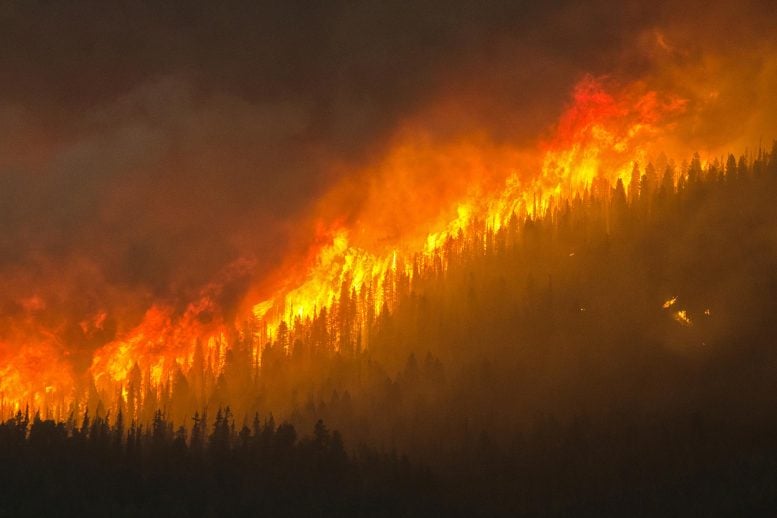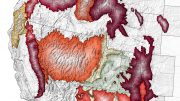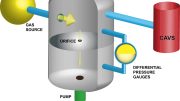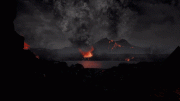
A study found that the world’s eight most extreme wildfire weather years occurred in the last decade, driven by reduced humidity and rising temperatures.
Lower humidity and higher temperatures are driving extreme weather that makes wildfires more frequent and intense, say experts.
The world’s eight most extreme wildfire weather years have occurred in the last decade, according to a new study that suggests extreme fire weather is being driven by a decrease in atmospheric humidity coupled with rising temperatures.
“Extreme conditions drive the world’s fire activity,” said former U of A wildfire expert Michael Flannigan, who conducted the research with study lead Piyush Jain, research scientist with Natural Resources Canada, and Sean Coogan, postdoctoral fellow Faculty of Agricultural, Life & Environmental Sciences.
“For example, in Canada, just three percent of fires are responsible for 97 percent of the area burned.”
For the study, the team examined extreme fire weather trends from 1979 to 2020 using common fire weather indexes that provide estimates for fire intensity and rate of fire spread, as well as changes in vapor pressure, or humidity.
The results link trends in rising global temperatures and decreases in humidity to the likelihood that naturally occurring extreme fire events will happen more often, spread to new areas, and burn more intensely than ever before in recorded history.
Decreasing relative humidity was a driver of more than three-quarters of significant increases in intensity and fire spread, and increasing temperature was a driver for 40 percent of significant trends.
The study also found significant increases in extreme weather that can cause major fires in close to half of the Earth’s burnable land mass — including in Northern Canada and British Columbia.
Flannigan said regions around the world have almost universally witnessed an increase in extreme weather in the past 40 years, with marked increases in the last two decades.
“It’s not a big surprise, but with climate change, we expect warmer conditions to continue and this trend to continue, expand and get worse.”
In British Columbia, for instance, Flannigan said three of the last five fire seasons — 2017, 2018, and 2021 — are the three worst on record.
Devastating BC Flooding Illustrates Further Risks of Increased Fire Activity
Living with wildfire also means living with the consequences of fire. The recent flooding that is crippling land travel in and out of B.C.’s lower mainland is a good example.
“It is not all attributable to fires, but fires do play a role. When you remove the vegetation, the rain is not being intercepted by the trees, the roots aren’t picking up the moisture, there is nothing to give the soil stability — you’re much more likely to see land- and mudslides in burnt areas.
“This has been documented in California for years.”
He noted even if global warming stopped tomorrow, the wildfire threat would continue to loom large for decades, so communities need to prepare for all wildfire eventualities.
“We’re on this path of a new reality. It’s not normal because there’s nothing normal about what’s going on.”
Reference: “Observed increases in extreme fire weather driven by atmospheric humidity and temperature” by Piyush Jain, Dante Castellanos-Acuna, Sean C. P. Coogan, John T. Abatzoglou and Mike D. Flannigan, 25 November 2021, Nature Climate Change.
DOI: 10.1038/s41558-021-01224-1









“For the study, the team examined extreme fire weather trends from 1979 to 2020…”
In other words, the “historical record” is risibly brief. Quite likely the last period that saw similar conditions was long before the satellite era, i.e., the fourteenth century AD.
2) Isn’t a warming climate supposed to raise humidity due to greater evaporation?
What is the explanation for the fires that DON’T happen during extreme weather?
To have a fire it is necessary to have a source of ignition and fuel to support the fire. Even with global warming, it never gets hot enough for spontaneous combustion. What isn’t mentioned in the article is that many fires are the result of arson and accidental, human-caused ignition. With an increasing population, and arguably more irrational behavior amongst many people, one can reasonably expect more sources of ignition.
Effective suppression of natural wildfires for decades has increased the potential fuel over time, leading to larger fires.
Extreme weather does little to contribute to more ignition sources or fuel. It only takes a few days of even typical 1950s Summer weather to increase the flammability of typical ground cover to a level of high risk.
I think the authors are being less than objective in their claims.
https://news.yahoo.com/combat-illegal-marijuana-grows-stanislaus-130000341.html
They remark, “In recent years these trespass operations have been the cause of major wildfires, destroying homes, lives and watersheds. According to research done by the Cannabis Removal on Public Lands Project, trespass grows have burned a minimum of 285,000 acres on California’s public lands, costing billions in suppression efforts.”